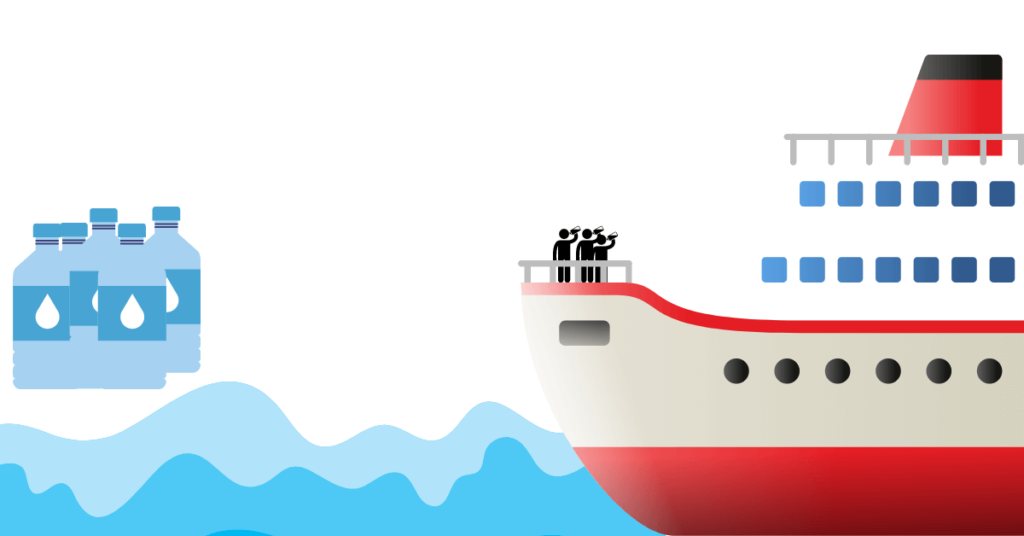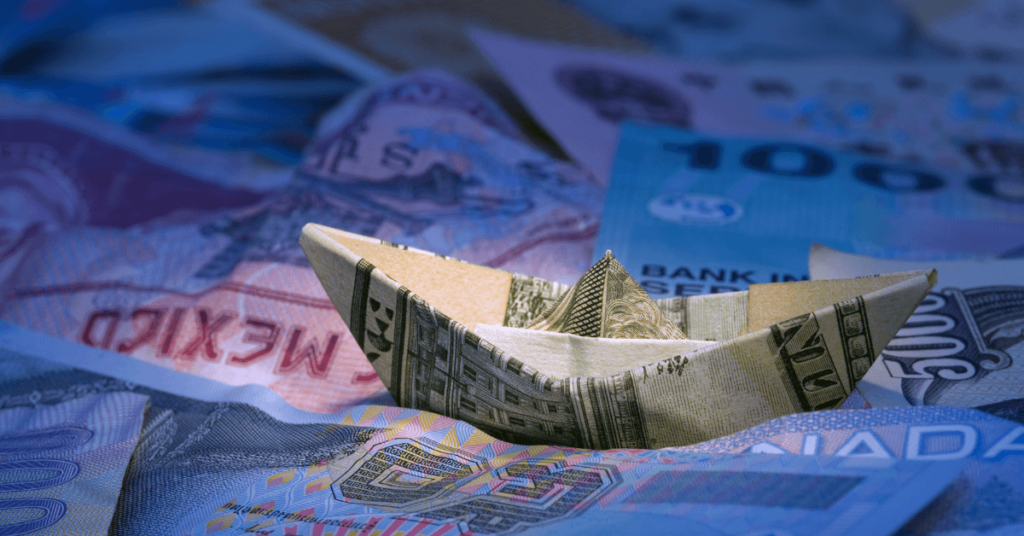Equator Crossing Ceremony: The Real Test Of Seafarers
I remember going back to my cabin at 1200 hrs after completing some important deck work. As is with all cadets, sleep is the all-engulfing element that overpowers the necessity to change one’s boiler suit and go in for a shower! Obviously enough, my urge to sleep took the better of me and I dozed off for I would have to go and assist the Chief Mate in is watch in a few hours. Little did I know what was to happen!
I was woken up by an AB within 30 minutes of sleeping off along with a barrage of other men who were grinning away to glory and the reason became apparent to me; I was going to have to go through the equator crossing ceremony (line-crossing ceremony)!

It is very seldom to find an age-old tradition that is carried out with such gusto at shore. It is therefore no wonder that the shore folk are appalled and excited at the same time when the ceremony is told to them in detail. The ceremony is a long-standing tradition of initiation that commemorates a sailor’s first time crossing of the equator. It is a memory that is etched into each and every seafarer, for it is an event that ushers in a sense of belonging to one’s profession. The excitement and enthusiasm that prevails among fellow shipmates at the time of conducting the line-crossing ceremony is one that beams of a happy past experience of the same and that of passing on the baton of the art of sailing to newbies.
Behind the pomp and grandeur of the event is a lot of history. The seamen who have already crossed the equator are referred to as Shellbacks (or, Sons Of Neptune) and those who haven’t are called Pollywogs. The Pollywogs are put through some physical tests to be initiated into the “ancient mysteries of the deep”! Mind you, no harm or hurt is involved, however the minor embarrassments must be taken in the right spirit. As with most healthy traditions, the small indignities are a symbolism for inclusion and frolic.
King Neptune is said to be the ruler of the seas and this entire shindig is orchestrated to appease the King by showing Him respect, to keep a sailor away from the perils of the sea and to bring good luck. One of the men onboard are made to dress up as King Neptune, with the Trident scepter in hand and a crown for the glorious head! Beside him is seated his wife, Queen Amphitrite and they’re both surrounded by a few more (including a Davy Jones impersonator) to replicate a royal proceeding.
The Pollywogs (also referred to as landlubbers) must be dipped in water for the initiation and passing into the realm of the seas. This part is the beginning of the ritual wherein they are stripped down to their underwear (or nothing!) and normally, dipped in the water gathered in the save-all tray! Following the dip, raw eggs are broken onto the heads of the first timers and then they are made to drink a deadly concoction of beer, chilly sauce, raw eggs etc. The reason behind this is to give the beginners a truth serum in order that they speak the absolute truth when they swear their allegiance to King Neptune and the sea! Then the heads are shaved in the most uneven manner possible (no historical reasoning for it, but personally judging, it is most likely to do with a purging process) and paint is applied at random all over the body (privates aside!).

Myriad approaches to conducting the ceremony will yield myriad accounts. However, the essence of it will remain the same. King Neptune goes to make an earnest speech and accepts the ushering of the sailor into the sea under the auspice of Her Majesty! The scepter is laid forth to mark this moment of truth. Following this aspect of the grand event, the sailors are tied together and marched forward to the anchor with the sound of a drum to coordinate movement.
Once at the anchor, the newly initiated are made to crack open a can of beer on the anchor itself at the first go. Cracking it open at once pertains to long luck and safe seas. This having completed, an entire round of the shop is taken to commemorate the event altogether. At the end of it, the Captain, Chief Engineer and the rest, as a mark of welcoming and respect, congratulate the initiates. This said, the party doesn’t end here! A feast is prepared at night for dinner with thorough fanfare. Normally, it is at dinner that the highly esteemed “Equator Crossing Certificate” is handed out to seal the ritual’s authenticity forever.

For the coming days, it is very easy to spot the sailors that have recently been through the ordeal, for their hair is either absolutely absent or styled as if rats had a feeding frenzy on them!
As appalling as it may seem to shore folk, it is a tradition that makes a man out a fresh cadet or trainee seaman. It is these little gems that bind us seafarers together in work and spirit and give us the inner strength to carry forward inspire rough seas and long periods away from home. The glimmer in the eyes of those that have already experienced it, telling you to live every moment of it, for it is never to happen again, is priceless. Much like a wedding, one experiences the joy of it just once, thus becoming a spectator for the all the others to come!
Disclaimer: The views mentioned above are of the author only. Data and charts, if used, in the article have been sourced from available information and have not been authenticated by any statutory authority. The author and Marine Insight do not claim it to be accurate nor accept any responsibility for the same. The views constitute only the opinions and do not constitute any guidelines or recommendation on any course of action to be followed by the reader.
You may also like to read:
What is Maritime English and Why It Is Important?
7 Most Common Superstitions of Seafarers
The article or images cannot be reproduced, copied, shared or used in any form without the permission of the author and Marine Insight.
Over to you..
Have you been through this ceremony?
Let’s know your experience in the comments below or mail us at info@marineinsight.com
Disclaimer :
The information contained in this website is for general information purposes only. While we endeavour to keep the information up to date and correct, we make no representations or warranties of any kind, express or implied, about the completeness, accuracy, reliability, suitability or availability with respect to the website or the information, products, services, or related graphics contained on the website for any purpose. Any reliance you place on such information is therefore strictly at your own risk.
In no event will we be liable for any loss or damage including without limitation, indirect or consequential loss or damage, or any loss or damage whatsoever arising from loss of data or profits arising out of, or in connection with, the use of this website.
Do you have info to share with us ? Suggest a correction
Disclaimer :
The information contained in this website is for general information purposes only. While we endeavour to keep the information up to date and correct, we make no representations or warranties of any kind, express or implied, about the completeness, accuracy, reliability, suitability or availability with respect to the website or the information, products, services, or related graphics contained on the website for any purpose. Any reliance you place on such information is therefore strictly at your own risk.
In no event will we be liable for any loss or damage including without limitation, indirect or consequential loss or damage, or any loss or damage whatsoever arising from loss of data or profits arising out of, or in connection with, the use of this website.

About Author
Shilavadra Bhattacharjee is a shipbroker with a background in commercial operations after having sailed onboard as a Third Officer. His interests primarily lie in the energy sector, books and travelling.
Related Posts
Subscribe To Our Newsletters
By subscribing, you agree to our Privacy Policy and may receive occasional deal communications; you can unsubscribe anytime.
















Did mine in 1978 in the Indian Ocean on the SS Lepeta. Fortunately no head shaving but the foul mixture was foul in the extreme. My wife did hers on SS Acavus in 1980 when she sailed with me. We still laugh about it to this day.
Read my comment again Eric. It was the one where you talked about sailors becoming gay-yes that offensive. Wha
t a terrible thing it would be if a Navy man became gay. SMH!
USMC Golden shellback here, aboard the USS Denver, 1981 … much more fun pitching than catching on Wog Day!!!
👍